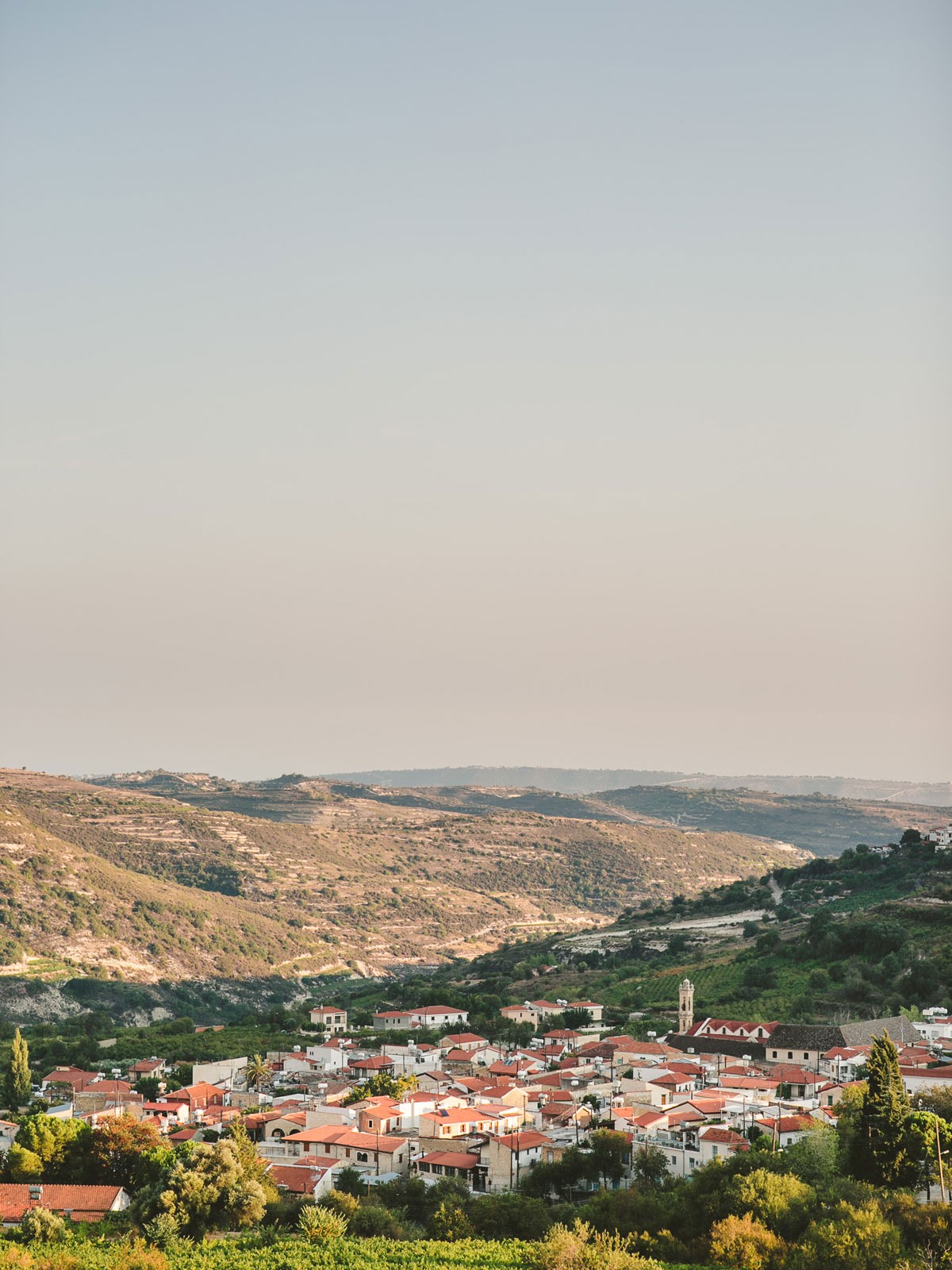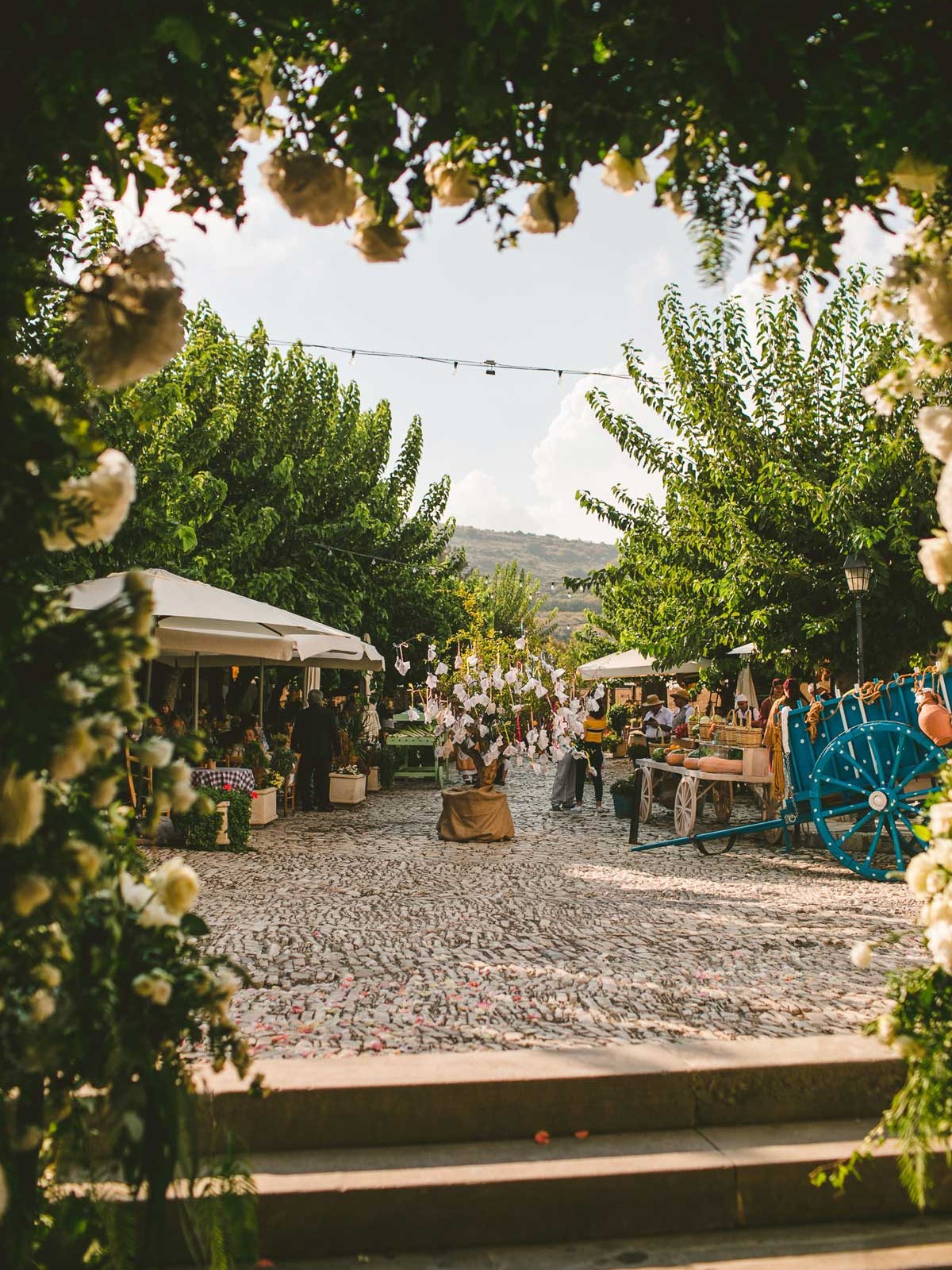
“It is like being in God’s palm hand”. These were the words of Vassili Barsky, a Russian monk who visited Omodos in 1735. Limassol’s wine village is hidden in the plain between Afamis and Laona hills and the peak of Prophet Elias, just 42 kilometres from Limassol city.
Framed within the high mountain peaks of Troodos, and with the scenery of the summit of Olympus, Omodos stands proudly in its green vineyards. Picturesque and hospitable, it is one of the main destinations of Cypriot countryside. The warmhearted inhabitants and their unique, ancient, Greek hospitality, rewards its visitors. While walking through the narrow, stone paved alleys, the senses widen. History appears wholeheartedly, from the majestic Monastery of the Holy Cross, the medieval wine press, elegant buildings, and folklore and historical museums.

This charming scenery is completed by hanging embroideries, known as “pipiles” (laces), unique in kind and artistry, while smells from homemade traditional products, such as the “arkatena” (traditional fragrant rusk bread), pleasantly awaken the memory.
But what the village is best known for is its wine; wine bottled by the memory of a long history and tradition that left indelible traces in the Hellenic wine tradition of the area. Its unadulterated traditional beauty and the abundance of materials generously offered by the fertile mountainous land are indisputable witnesses of its genuine Cypriot character.
The name of the village
Omodos has a long history. Archaeological excavations have uncovered findings that testify to the presence of settlements in the area since prehistoric and Roman times. However, more information appears at the end of the Byzantine period or at the beginning of the Frankish occupation, where various references to Homodos on maps or documents bring to light more details of its history.
However, there are many oral traditions about the charming wine village. It is said that Omodos was created by the gossip of an old beggar lady. According to tradition, she was wandering from Pano to Kato Koupetra (a village which was located opposite Omodos and no longer exists), knocked on doors and asked for money. Along with the money she asked for, she also carried a lot of gossip, which upset the residents, creating great hatred and enmity that resulted to the two areas clashing. The commander tried to reconcile them but the damage had already been done. The enmity created was so great that led to the dissolution of the village, giving its place to Omodos.

Another tradition states that the inhabitants of Koupetra created Omodos. When they saw light shining from the opposite hill every night, they decided to go and find out what was shining. They saw a large bramble in which a candle shone and decided to dig around it, telling to each other to dig “me ton modo sou”, which means slowly and carefully. At that point they decided to build the new village, which they named Omodos.
Interpretations do not stop there, since another version etymologises the name from the ancient Greek words omou (together) and odos (street) as from that point passed the roads that led to the surrounding villages. Nevertheless, the prevailing opinion is that the village was named after the feudal lord Homodeus, to whom it belonged.










